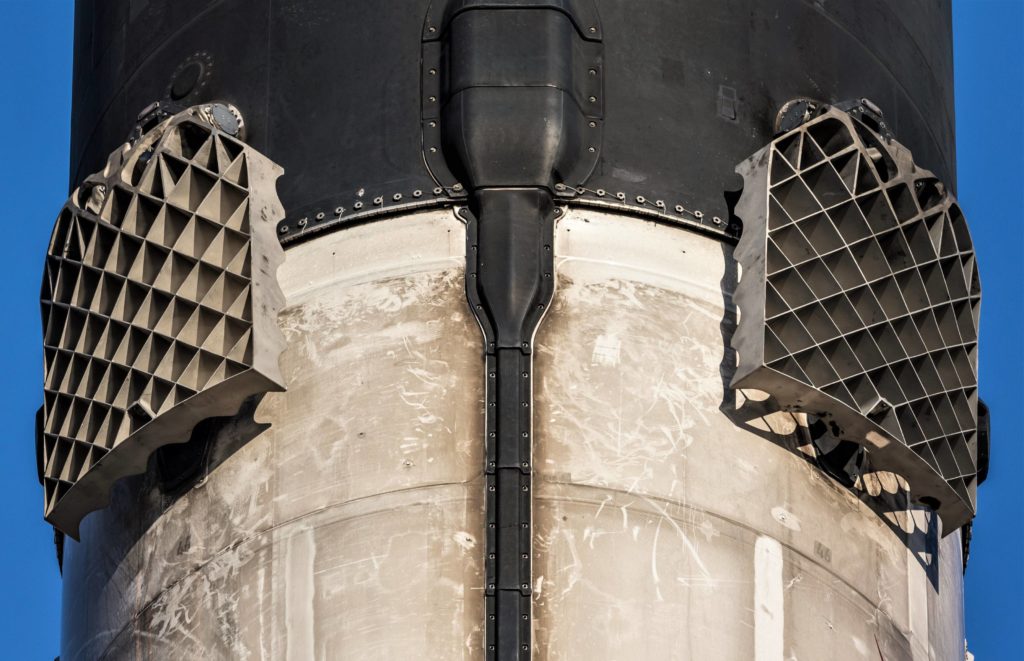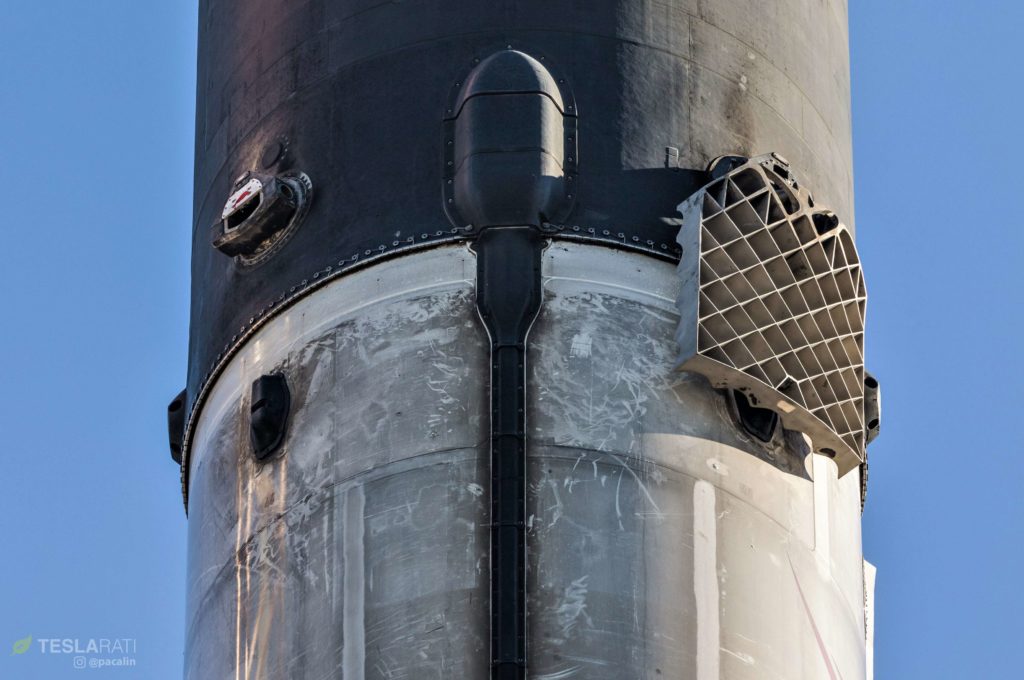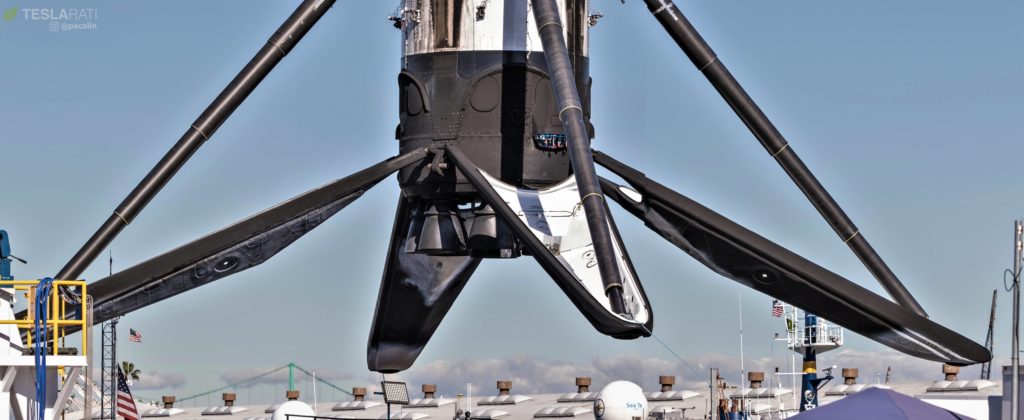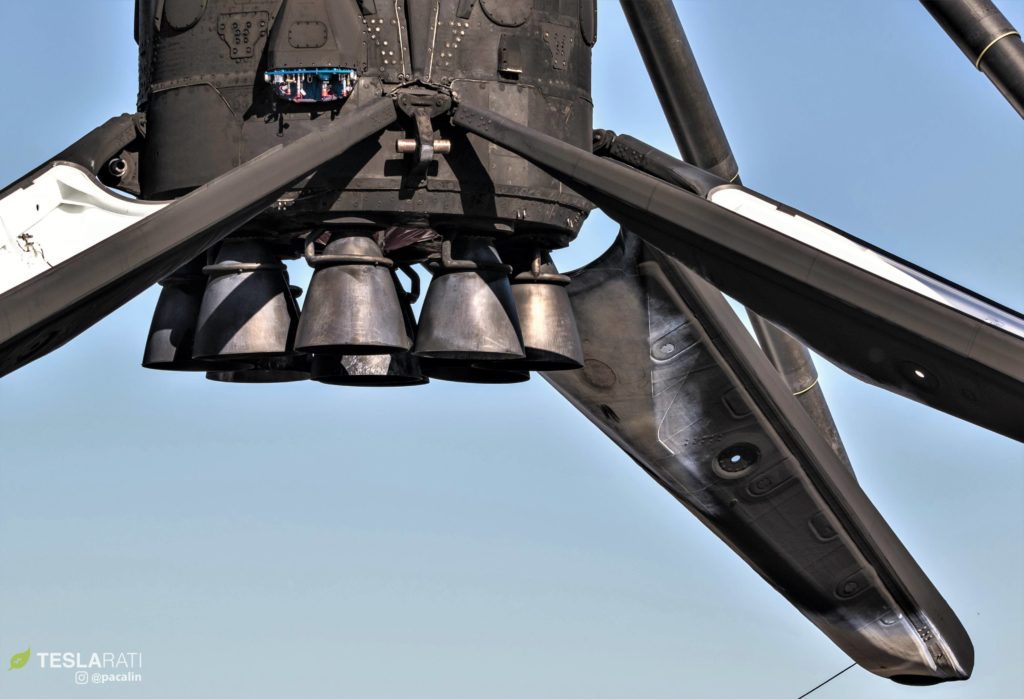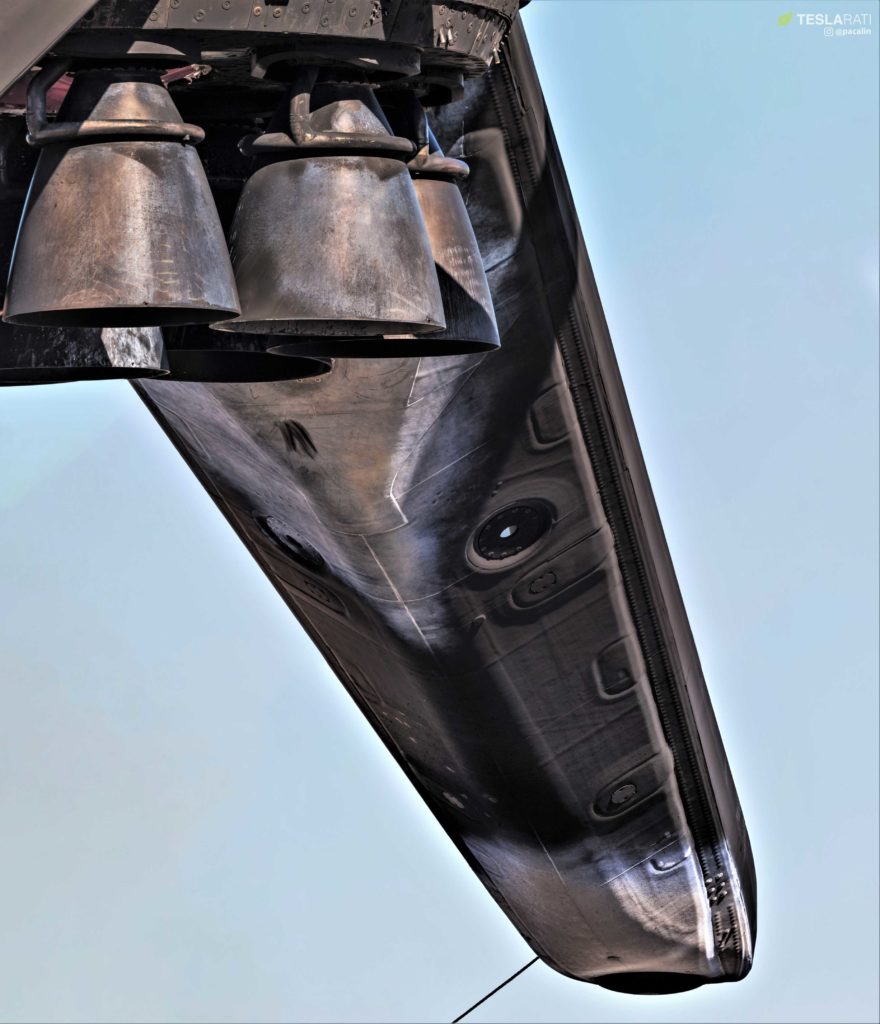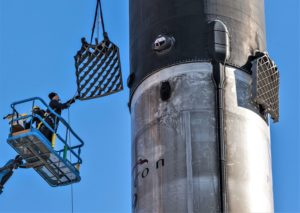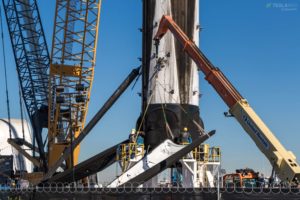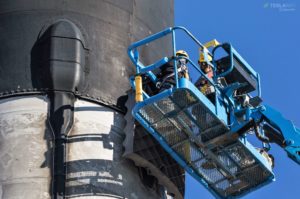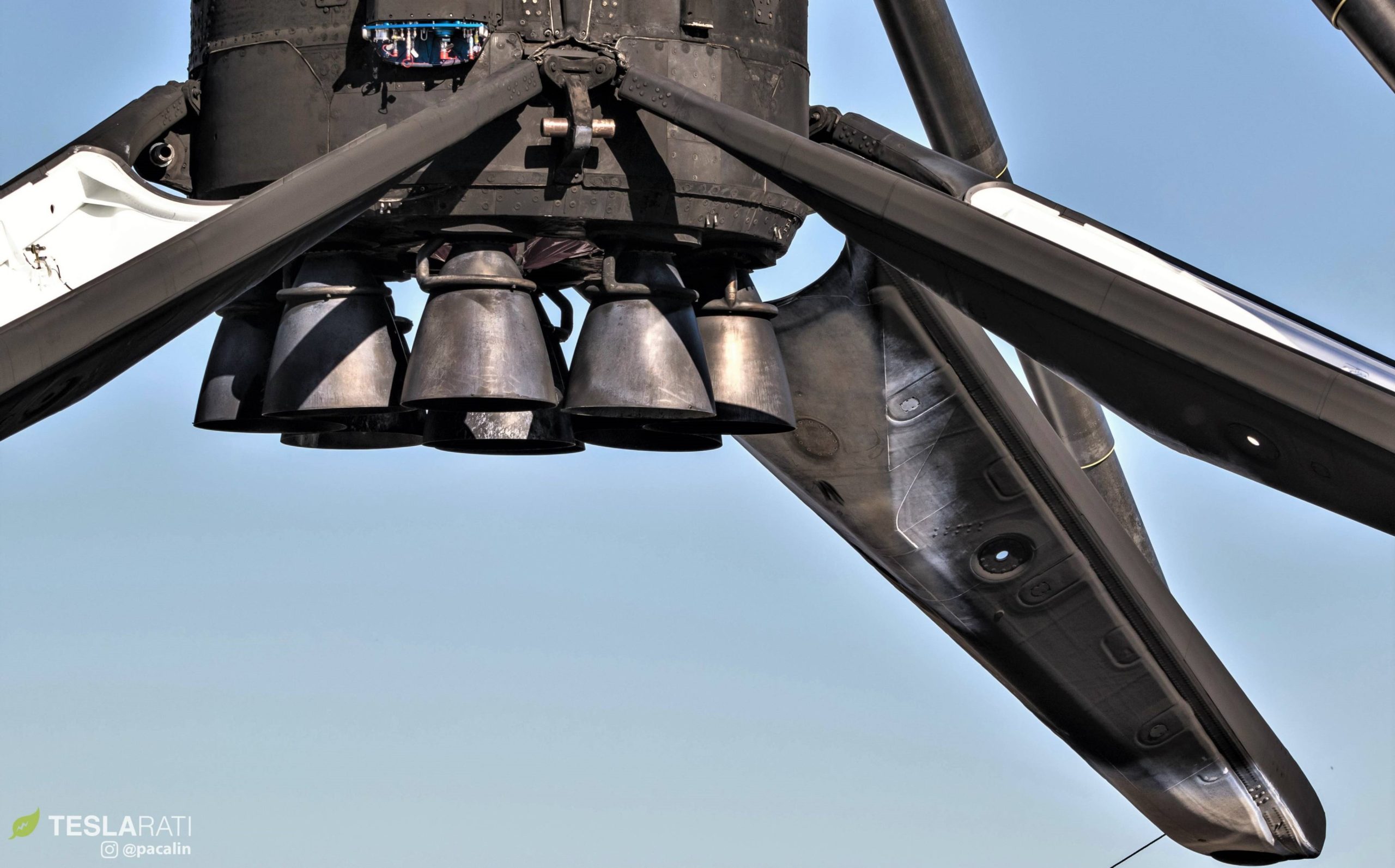
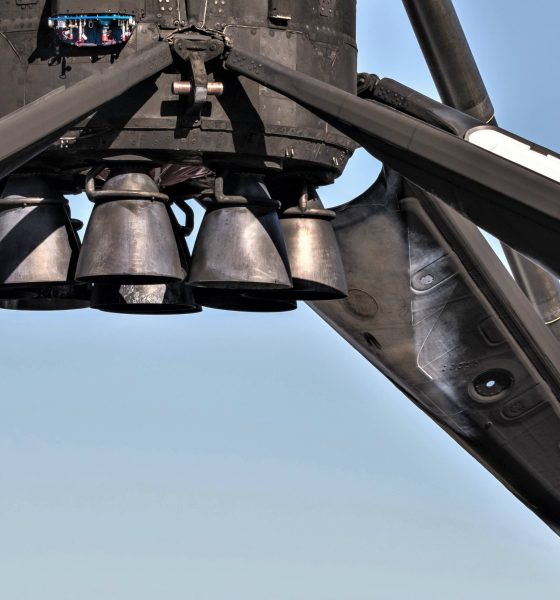
News
SpaceX caps major Falcon 9 Block 5 reuse with spectacular Port of LA recovery
SpaceX has completed what might be its most important Falcon 9 reuse yet after successfully launching and recovering booster B1046 for the third time in just six months. Prior to this launch, the company had never before flown a reused Falcon 9 booster more than once.
Making way for a probable fourth launch in the near future, B1046’s Port of Los Angeles return was marked by a stream of spectacular visuals as seasoned SpaceX recovery technicians transferred the booster from drone ship to land, performed initial inspections, and prepared it for transport back to Hawthorne, where it will undergo (hopefully minimal) refurbishment.
Falcon 9 B1046.3 went horizontal this afternoon after spending 6 days at port of LA. #spacex @Teslarati pic.twitter.com/QqTpMFvl0F
— Pauline Acalin (@w00ki33) December 11, 2018
Displaying inspiring dedication, Teslarati photographer Pauline Acalin managed to stick with B1046 for a major portion of the six days it spent on the docks, despite a rare spate of rainy and downright stormy days in Los Angeles. Her patience was awarded with a number of beautiful photos documenting nearly every significant aspect of any given Falcon 9 booster recovery, ranging from the lift from drone ship to dockside and the removal of all four titanium grid fins to the rocket’s flip from a vertical to a horizontal orientation ahead of road transport back to SpaceX’s Hawthorne factory.
Above all else, the most noteworthy aspect of Falcon 9 B1046’s third return to port is just how unharmed the rocket appears, at least from an external perspective. The booster has grown a fairly healthy triple coating of kerosene soot from its three reentry and landing burns, thick enough that Falcon 9’s mirror-shiny white skin is barely visible on the lower (RP-1) propellant tank. At this point, it seems that SpaceX has concluded that any possible performance loss from those soot layers are small enough to be negligible.
- Falcon 9 B1046 stands proud and sooty after its third successful launch. (Pauline Acalin)
- Goodbye, grid fin! (Pauline Acalin)
- Falcon 9 is lifted from drone ship JRTI to SpaceX’s Port of LA dock space. (Pauline Acalin)
- Shiny(ish)! (Pauline Acalin)
- It’s unclear what exactly causes it, but Falcon 9 Block 5’s newly heat-shielded legs turn a rather bright white after being scorched during booster landings. (Pauline Acalin)
In an operational sense, SpaceX’s Falcon 9 recovery procedures and the technicians that perform the actual task of recovery seem to be approaching the work with an attitude that fits better in the realm of commercial aviation than in what is perceived as modern rocketry (clean rooms, surgical precision, etc.). Both the procedures and technicians seem to have been refined into what now runs like a well-oiled machine, wrapping up the complex and pathfinding task of recovering a thrice-flown Falcon 9 booster in less than a week from its drone ship landing to Hawthorne arrival.
The condition of B1046 could well make or break the future of the Falcon 9 family, as any significant departure from Block 5’s design intentions could cut the operational lifetime of the ~10 boosters already produced by dozens of fleet-wide flights.
- Falcon 9 B1046’s flight-proven titanium grid fins are carefully removed. (Pauline Acalin)
- Legs, too! (Pauline Acalin)
- With any luck, B1046’s nine Merlin 1D engines may well see another orbital-class launch in the near future. (Pauline Acalin)
- Never forget your aerospace-grade pool noodles, kids. (Pauline Acalin)
On the other hand, a rapid and relatively painless post-recovery inspection and a general bill of nominal health could – pending customer comfort and SpaceX pricing it right – open the floodgates for the company’s fleet of (optimally) reusable rocket boosters. Even if it turns on that Falcon 9 Block 5 boosters almost invariably demand $10M+ in extensive refurbishment after every launch and can only manage a max of 10 launches before heading to the scrapyard, SpaceX could quite literally become untouchable on the global launch market and remain so for a minimum of 5+ years.
First grid fin has been removed from the 3x flown Falcon 9 standing at port of LA. Been wanting to see this happen for years. So NEAT! #spacex @Teslarati pic.twitter.com/iICf7Pypn8
— Pauline Acalin (@w00ki33) December 8, 2018
So long as the company can preserve the Falcon family’s impressive and ever-growing heritage of reliability alongside industry-leading reusability, there isn’t a company or country in the world that could beat SpaceX’s business model if it ever came down to a contract competition death-match, so to speak, not for another 5-10 years. It may never come to that, but that capability will – at the bare minimum – give SpaceX a nearly unbeatable upper hand for launching its own global constellation of internet satellites, known as Starlink.
For prompt updates, on-the-ground perspectives, and unique glimpses of SpaceX’s rocket recovery fleet check out our brand new LaunchPad and LandingZone newsletters!

News
Tesla FSD V14.2.1 is earning rave reviews from users in diverse conditions
Tesla’s Full Self-Driving (Supervised) software continues its rapid evolution, with the latest V14.2.1 update drawing widespread praise.

Tesla’s Full Self-Driving (Supervised) software continues its rapid evolution, with the latest V14.2.1 update drawing widespread praise for its smoother performance and smarter decision-making.
Videos and firsthand accounts from Tesla owners highlight V14.2.1 as an update that improves navigation responsiveness, sign recognition, and overall fluidity, among other things. Some drivers have even described it as “more alive than ever,” hinting at the system eventually feeling “sentient,” as Elon Musk has predicted.
FSD V14.2.1 first impressions
Early adopters are buzzing about how V14.2.1 feels less intrusive while staying vigilant. In a post shared on X, Tesla owner @LactoseLunatic described the update as a “huge leap forward,” adding that the system remains “incredibly assertive but still safe.”
Another Tesla driver, Devin Olsenn, who logged ~600 km on V14.2.1, reported no safety disengagements, with the car feeling “more alive than ever.” The Tesla owner noted that his wife now defaults to using FSD V14, as the system is already very smooth and refined.
Adverse weather and regulatory zones are testing grounds where V14.2.1 shines, at least according to testers in snow areas. Tesla watcher Sawyer Merritt shared a video of his first snowy drive on unplowed rural roads in New Hampshire, where FSD did great and erred on the side of caution. As per Merritt, FSD V14.2.1 was “extra cautious” but it performed well overall.
Sign recognition and freeway prowess
Sign recognition also seemed to show improvements with FSD V14.2.1. Longtime FSD tester Chuck Cook highlighted a clip from his upcoming first-impressions video, showcasing improved school zone behavior. “I think it read the signs better,” he observed, though in standard mode, it didn’t fully drop to 15 mph within the short timeframe. This nuance points to V14.2.1’s growing awareness of temporal rules, a step toward fewer false positives in dynamic environments.
FSD V14.2.1 also seems to excel in high-stress highway scenarios. Fellow FSD tester @BLKMDL3 posted a video of FSD V14.2.1 managing a multi-lane freeway closure due to a police chase-related accident. “Perfectly handles all lanes of the freeway merging into one,” the Tesla owner noted in his post on X.
FSD V14.2.1 was released on Thanksgiving, much to the pleasant surprise of Tesla owners. The update’s release notes are almost identical to the system’s previous iteration, save for one line item read, “Camera visibility can lead to increased attention monitoring sensitivity.”
News
Tesla FSD Supervised ride-alongs in Europe begin in Italy, France, and Germany
The program allows the public to hop in as a non-driving observer to witness FSD navigate urban streets firsthand.

Tesla has kicked off passenger ride-alongs for Full Self-Driving (Supervised) in Italy, France and Germany. The program allows the public to hop in as a non-driving observer to witness FSD navigate urban streets firsthand.
The program, detailed on Tesla’s event pages, arrives ahead of a potential early 2026 Dutch regulatory approval that could unlock a potential EU-wide rollout for FSD.
Hands-Off Demos
Tesla’s ride-along invites participants to “ride along in the passenger seat to experience how it handles real-world traffic & the most stressful parts of daily driving, making the roads safer for all,” as per the company’s announcement on X through its official Tesla Europe & Middle East account.
Sign-ups via localized pages offer free slots through December, with Tesla teams piloting vehicles through city streets, roundabouts and highways.
“Be one of the first to experience Full Self-Driving (Supervised) from the passenger seat. Our team will take you along as a passenger and show you how Full Self-Driving (Supervised) works under real-world road conditions,” Tesla wrote. “Discover how it reacts to live traffic and masters the most stressful parts of driving to make the roads safer for you and others. Come join us to learn how we are moving closer to a fully autonomous future.”
Building trust towards an FSD Unsupervised rollout
Tesla’s FSD (Supervised) ride-alongs could be an effective tool to build trust and get regular car buyers and commuters used to the idea of vehicles driving themselves. By seating riders shotgun, Tesla could provide participants with a front row seat to the bleeding edge of consumer-grade driverless systems.
FSD (Supervised) has already been rolled out to several countries, such as the United States, Canada, Australia, New Zealand, and partially in China. So far, FSD (Supervised) has been received positively by drivers, as it really makes driving tasks and long trips significantly easier and more pleasant.
FSD is a key safety feature as well, which became all too evident when a Tesla driving on FSD was hit by what seemed to be a meteorite in Australia. The vehicle moved safely despite the impact, though the same would likely not be true had the car been driven manually.
News
Swedish union rep pissed that Tesla is working around a postal blockade they started
Tesla Sweden is now using dozens of private residences as a way to obtain license plates for its vehicles.

Two years into their postal blockade, Swedish unions are outraged that Tesla is still able to provide its customers’ vehicles with valid plates through various clever workarounds.
Seko chairman Gabriella Lavecchia called it “embarrassing” that the world’s largest EV maker, owned by CEO Elon Musk, refuses to simply roll over and accept the unions’ demands.
Unions shocked Tesla won’t just roll over and surrender
The postal unions’ blockade began in November 2023 when Seko and IF Metall-linked unions stopped all mail to Tesla sites to force a collective agreement. License plates for Tesla vehicles instantly became the perfect pressure point, as noted in a Dagens Arbete report.
Tesla responded by implementing initiatives to work around the blockades. A recent investigation from Arbetet revealed that Tesla Sweden is now using dozens of private residences, including one employee’s parents’ house in Trångsund and a customer-relations staffer’s home in Vårby, as a way to obtain license plates for its vehicles.
Seko chairman Gabriella Lavecchia is not pleased that Tesla Sweden is working around the unions’ efforts yet again. “It is embarrassing that one of the world’s largest car companies, owned by one of the world’s richest people, has sunk this low,” she told the outlet. “Unfortunately, it is completely frivolous that such a large company conducts business in this way.”
Two years on and plates are still being received
The Swedish Transport Agency has confirmed Tesla is still using several different workarounds to overcome the unions’ blockades.
As noted by DA, Tesla Sweden previously used different addresses to receive its license plates. At one point, the electric vehicle maker used addresses for car care shops. Tesla Sweden reportedly used this strategy in Östermalm in Stockholm, as well as in Norrköping and Gothenburg.
Another strategy that Tesla Sweden reportedly implemented involved replacement plates being ordered by private individuals when vehicles change hands from Tesla to car buyers. There have also been cases where the police have reportedly issued temporary plates to Tesla vehicles.

